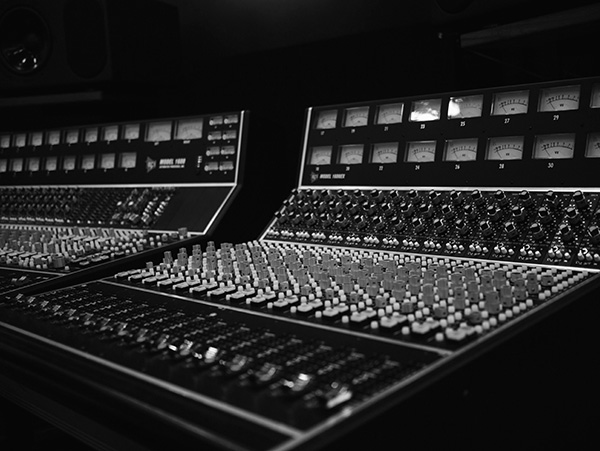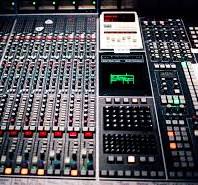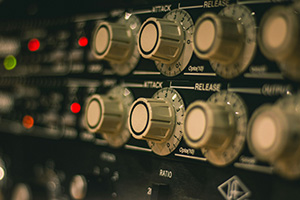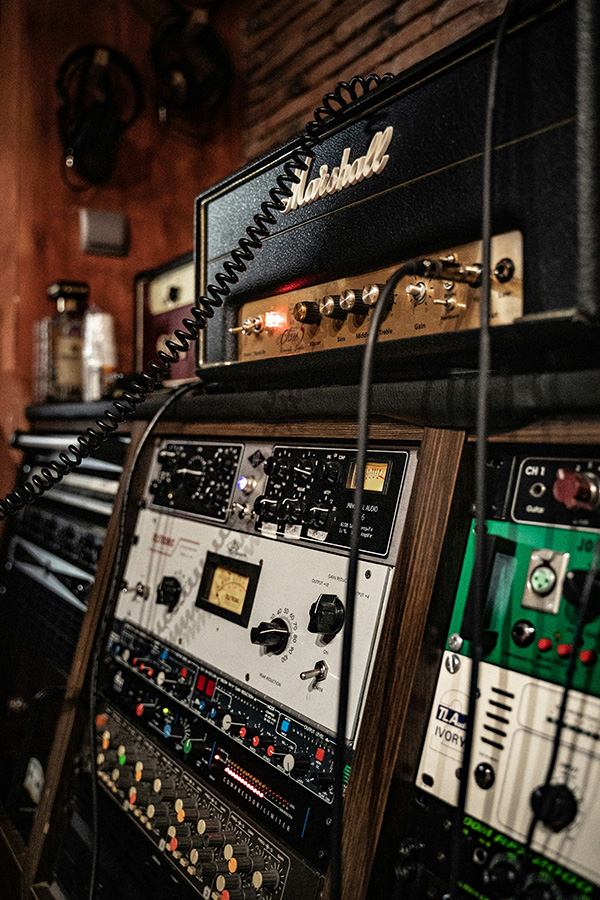A mixing engineer is responsible for balancing and shaping multiple tracks into a cohesive song, improving the sonic quality and overall enjoyability of a musical recording.
Tasks of a Mixing Engineer
History of the Mixing Engineer
Famous Mixing Engineers
Mixing Tips & Techniques
Tasks of a Mixing Engineer
Balancing Audio Levels
Mixing engineers adjust the volume levels of individual audio tracks to ensure that each element of the mix, such as vocals, instruments, and effects, is heard clearly and contributes harmoniously to the overall sound.
Enhancing Sonic Character
Mixing engineers use processors like EQ (equalization) and compression to enhance the sonic character of each track. This involves shaping the frequency response, dynamics, and tonal balance of the audio elements.
Adding Effects
Mixing engineers add effects like delay, reverb, and modulation to create depth, space, and texture in the mix. These effects can enhance the overall sound and contribute to the desired artistic vision.
Creating Stereo Image
Mixing engineers manipulate the panning and stereo placement of audio elements to create a balanced and immersive stereo image. This involves positioning instruments and vocals in the stereo field to achieve clarity and separation.
Editing and Arrangement
Mixing engineers may make edits to the audio tracks, such as trimming, crossfading, or rearranging sections, to improve the flow and structure of the song. This ensures that the arrangement is cohesive and engaging.
Communication and Collaboration
Mixing engineers work closely with artists, producers, and record label representatives to understand their artistic vision and achieve the desired sonic quality. They provide samples of the work and make adjustments based on feedback.
Preparing the Final Mix
Once all parties are satisfied with the mix, the mixing engineer prepares the final mixdown. This involves exporting the mixed audio tracks into a standard stereo format that can be used for distribution, whether in music, film, or other audio content.
History of the Mixing Engineer
The role of a mixing engineer has evolved over time alongside advancements in technology and changes in the music industry. Here is a brief overview of the history of the mixing engineer:
Early Days
In the early days of recorded music, mixing was a simpler process. Engineers would physically adjust the faders on a mixing console to balance the levels of different audio tracks. This process was often done in real-time during the recording session.
Analog Era
With the advent of multitrack recording in the 1950s and 1960s, mixing engineers gained more control over the individual tracks. They could manipulate the levels, apply effects, and create a stereo image by panning tracks across the stereo field. Analog consoles and tape machines were the primary tools used during this era.
Digital Revolution
The introduction of digital audio workstations (DAWs) in the 1980s and 1990s revolutionized the mixing process. Mixing engineers could now work with virtual representations of audio tracks and use software plugins to process and manipulate the sound. This digital revolution democratized mixing, allowing more artists to mix their own music.
Modern Era
In the modern era, mixing engineers continue to play a crucial role in the music production process. They bring together the various elements of a recording, balance the levels, shape the sound with EQ and compression, add effects, and create a cohesive and polished final mix. Mixing engineers collaborate closely with artists, producers, and record label representatives to achieve the desired sonic quality.
It’s worth noting that the role of a mixing engineer is not limited to music. Mixing engineers also work in film, television, and other audio-related content, ensuring that the audio elements are well-balanced and enhance the overall experience for the audience.

Essential Tools of the Mixing Engineer


Faders and Pan Knobs
Faders and pan knobs are fundamental tools for a mixing engineer. Faders allow the engineer to control the volume levels of individual tracks, ensuring a balanced mix. Pan knobs, on the other hand, enable the engineer to position audio signals within the stereo field, creating a sense of space and separation between instruments.


Equalizers (EQs)
EQs are essential tools for shaping the frequency balance of audio tracks. Mixing engineers use EQs to boost or cut specific frequency ranges, allowing each instrument to occupy its own sonic space and ensuring clarity in the mix. EQs help to enhance the tonal characteristics of individual tracks and create a balanced overall sound.


Compressors
Compressors are indispensable tools for controlling the dynamic range of audio tracks. They help to even out the levels of different elements within a mix, making softer sounds more audible and preventing louder sounds from clipping or distorting. Compressors also add sustain and can shape the transient response of instruments, contributing to the overall balance and impact of the mix.


Famous Mixing Engineers
1960s: Tom Dowd, known for his work with artists such as Aretha Franklin, Otis Redding, and The Allman Brothers Band, made significant contributions to the field of mixing engineering during this decade.
1970s: Chris Lord-Alge emerged as a prominent mixing engineer during this decade. He worked on notable albums like James Brown’s “Gravity” and the soundtrack for “Rocky IV”.
1980s: Bob Clearmountain gained recognition as one of the most acclaimed mixers in the contemporary pop world during this decade. His work with artists such as The Rolling Stones, Tina Turner, and Carly Simon solidified his reputation.
1990s: Serban Ghenea rose to prominence during the 1990s and has since become one of the most high-profile mixing engineers in the world. He has mixed over 188 #1 recordings and has won numerous Grammy Awards.
2000s: Tony Maserati gained recognition as a mixing engineer during this decade. He has worked with artists like Beyoncé, Jay-Z, and Notorious B.I.G., and his contributions to their albums have been highly regarded.
2010s: Young Guru, known for his work with Jay-Z, Eminem, and Rihanna, became a prominent mixing engineer during this decade.
2020s: The 2020s are still ongoing, and it is difficult to determine the most famous mixing engineers of this decade as their careers are still developing. However, some notable engineers who have been making waves in recent years include Manny Marroquin, who has worked with artists like Bruno Mars, Kanye West, and Rihanna, and Ariel Rechtshaid, known for his work with artists such as HAIM, Vampire Weekend, and Adele.
Three Mixing Tips & Techniques
Focus on the Mix
Putting effort into improving your mixdowns is crucial for enhancing your tracks. Mixing is about getting the best possible sound out of your source material. It won’t turn a boring song into a hit, but it can significantly improve the overall quality of your music.
Take Breaks and Maintain Fresh Ears
Overworking can lead to ear fatigue and make it challenging to listen to the mix from a fresh perspective. Take regular breaks, ideally 15-30 minutes every 2 hours, to rest your ears. Additionally, ensure you get enough sleep and eat healthy food to maintain your overall well-being, as it can positively impact your mix.
Communicate Clearly and Provide Examples
When working with a mixing engineer, be clear and specific about what you want. Don’t hesitate to express your preferences and provide examples if necessary. Clear communication helps the engineer understand your vision and reduces the need for multiple revisions. It’s important to establish a collaborative relationship and provide detailed mix notes to ensure your expectations are met.
Why Hire a Professional Mixing Engineer for Your Music Project?
While it is possible to learn and do mixing music yourself, hiring a professional can provide a level of expertise, objectivity, and efficiency that can greatly benefit your music production.
Experience and Expertise
Professional mixing engineers have years of experience and expertise in their field. They have honed their skills through practice, training, and working on numerous projects. Their knowledge of audio processing, signal flow, and mixing techniques allows them to achieve high-quality results and bring out the best in your music.
Objective and Unbiased Perspective
A professional mixing engineer brings an objective and unbiased perspective to your project. They can listen to your music with fresh ears and make critical decisions based on what serves the song best. This impartiality helps in achieving a balanced mix and ensures that the final product meets professional standards.
Technical and Artistic Skillset
Mixing engineers possess a combination of technical expertise and artistic sensibility. They understand the technical aspects of mixing, such as EQ, compression, and spatial placement, and know how to use these tools effectively to enhance the sonic qualities of your music. Additionally, their artistic vision and creativity can elevate your music to new heights.
Efficiency and Time-Saving
Hiring a professional mixing engineer allows you to focus on your strengths as an artist or producer. It frees up your time and energy that would otherwise be spent on the intricacies of mixing, enabling you to concentrate on your creative process. Professional mixers often work efficiently, which means you can finish your music and get it released in a timely manner.
Access to Professional Tools and Equipment
Professional mixing engineers have access to high-quality tools, plugins, and equipment that may not be readily available to everyone. They can utilize these resources to enhance the sonic quality of your music and achieve a polished and professional sound.